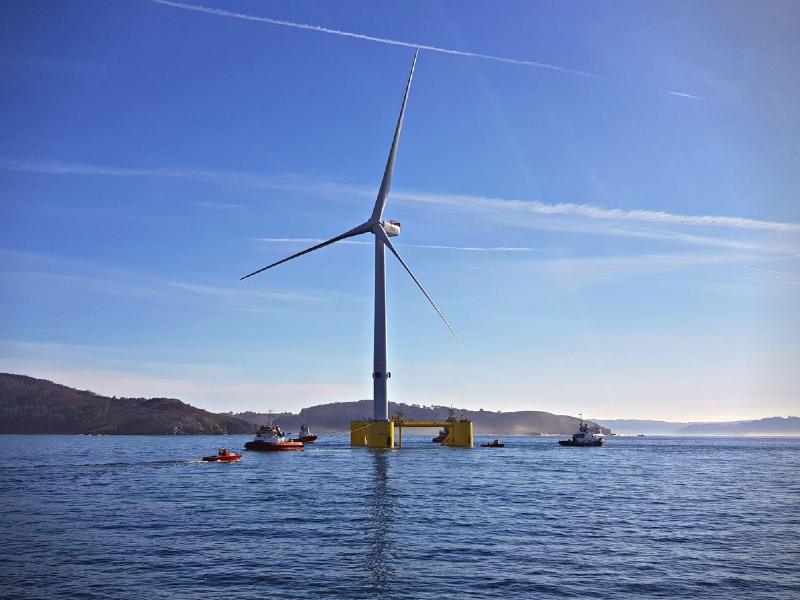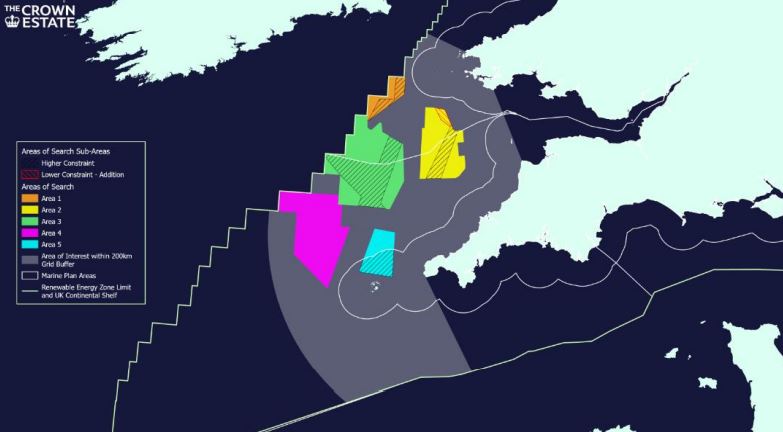
Five broad areas for the development of floating offshore wind have been identified in the UK waters of the Celtic Sea by the Crown Estate, the British Queen’s ‘sovereign public estate’.
Following technical analysis and engagement with stakeholders, as well as with UK and Welsh governments, the five ‘Areas of Search’ will be split into small project development sites, which will be offered to the market via competitive tender, to be launched in mid-2023.
Huub den Rooijen, managing director for marine at The Crown Estate, said: “The Celtic Sea has the potential to become one of the great renewable energy basins of the world, bringing economic growth and abundant clean power.
“This leasing round is a first step, and we need to work together to bring technology costs down, deliver environmentally sound solutions, and respect the needs of the many other users of the marine space.”
The goal is that these project areas will deliver 4GW of floating offshore wind power, enough to power almost four million homes, by 2035.

The figure presents the five AoS identified through the spatial design process. The hatched areas within the AoS relate to potential risks or areas of potential opportunity that have been highlighted through bilateral engagement. Credit: The Crown Estate
According to The Crown Estate, the Celtic Sea has the potential to accommodate up to an additional 20GW of floating offshore wind capacity by 2045. In order to unlock this potential, investments are needed and a supply chain must be established.
To this end, The Crown Estate will be tendering 1GW-scale projects which can be developed in a phased approach, allowing for a more coordinated development approach.
Now that the Areas of Search have been identified, the Habitats Regulations Assessment (HRA) will begin, to assess the potential impacts of these leasing plans on site habitats.
Based on the outcome of the HRA, The Crown Estate will confirm the seabed rights for three test and demonstration sites in 2023.
Nicola Clay, Head of New Ventures Marine at The Crown Estate, said: “The focus in our current programme on delivering the proposed 4GW of floating wind power represents a phased approach, which will provide important lessons at each stage to support and enable the future growth of the sector.
“It gives visibility to a long-term pipeline that will support investment in the regional supply chain and infrastructure, contribute significantly to UK energy security, and help projects in the Celtic Sea reach a scale where they can become more cost-competitive.
“As we look to refine the areas of search and progress the Habitats Regulations Assessment, we will continue to collaborate with government and other key stakeholders to hasten delivery and create lasting social, economic, and environmental prosperity for the nation.”